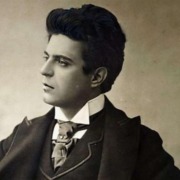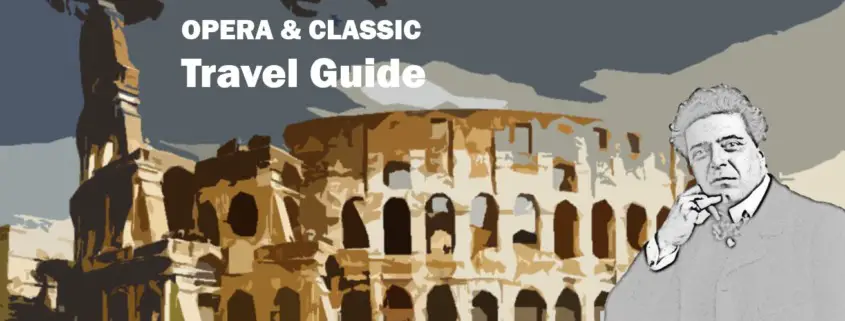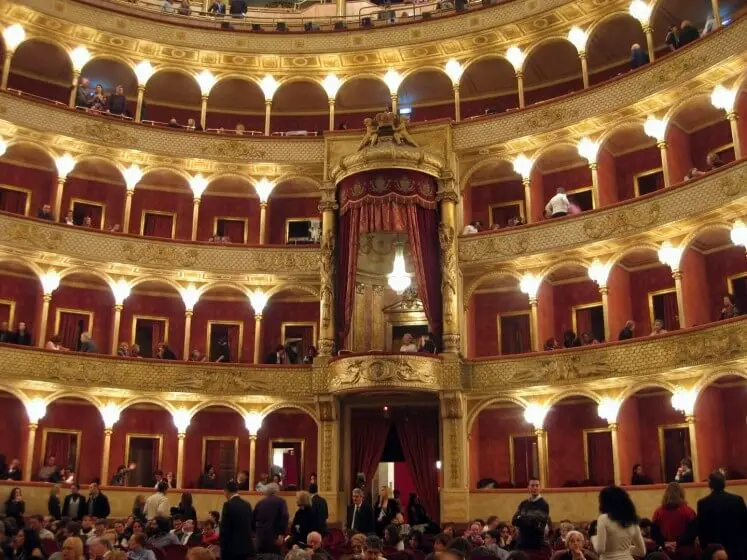Mascagni in Rome
The series about historical places of opera art & culture. Get to know exciting excursion and travel ideas for opera lovers. This time: Mascagni in Rome.
All Destinations on google maps with links to detailed Blogposts:
Mascagni in Rome

Mascagni’s rise is a musical dishwasher career. The son of a baker from Puglia was able to study at the conservatory in Milan thanks to the support of noble patrons. He became friends there with Puccini, with whom he also shared a room for a time. Mascagni dropped out of his studies, but only made it to the position of bandmaster of a small town.
He subsequently took part in the composer’s competition of the publisher Sonzogno and surprisingly got into the last three with “Cavalleria rusticana”, which enabled him to have a performance in Rome, where his work was chosen as the winner. The work hit like a bomb and was quickly played all over the world and Mascagni was freed from money worries for the rest of his life.
It is part of Mascagni’s triumph and tragedy that in later years he was unable to repeat this success of his younger years. As a result, he remained faithful to Rome. He came to terms with the fascist regime, which is why he was not given an honorable burial when he died shortly after World War II.
Destination Teatro Dell ‘Opera (former Teatro Costanzi)
Perhaps the greatest sensation in the history of opera took place at the Teatro Costanzi in 1890. In the presence of the music-loving Queen Margerita, but in front of a half-empty hall, the premiere of the piece by the completely unknown composer took place within the framework of Sonzogno’s competition. When the play was over, Mascagni had to step in front of the curtain sixty times and the duration of the ovation roughly corresponded to the performance time of the one-act play. The next day Mascagni was a celebrity and quickly the work began its triumphal march around the world, which it has maintained to this day.
Teatro dell ‘opera:
Destination Hotel Plaza di Roma
Mascagnis spent the last 12 years of his life in this luxury hotel and died in his suite. Around the corner, in Via del Corso, near the Plaza Hotel, in the part of the street that belongs to Rione Campo Marzio, there is a bust of Mascagni, placed in 1948, commemorating the famous resident.
Mascagni’s bust:
The hotel delights with its space and terrace. A walk through the hotel and a (not cheap) coffee on the beautiful terrace complete a visit to the city center.
Grandhotel Plaza:
https://www.grandhotelplaza.com/en/
Musical background: The music of Cavalleria rusticana
Mascagni wrote the music of Cavalleria with the help of just over half a dozen leitmotifs. Mascagni’s main technique was to create succinct motifs and repeatedly reassemble them as musical building blocks for the numbers.
The Easter hymn “‘Ineggiamo, il Signor non è morto” is one of the absolute highlights of the opera. Santuzza sings an Easter hymn in front of the church square and is accompanied by the choir singing in the church.
Ineggiamo
https://opera-inside.com/cavalleria-rusticana-by-pietro-mascagni/#Inneggiamo
The most famous piece, however, is the Intermezzo:
Intermezzo:
https://opera-inside.com/cavalleria-rusticana-by-pietro-mascagni/#Intermezzo







Leave a Reply
Want to join the discussion?Feel free to contribute!